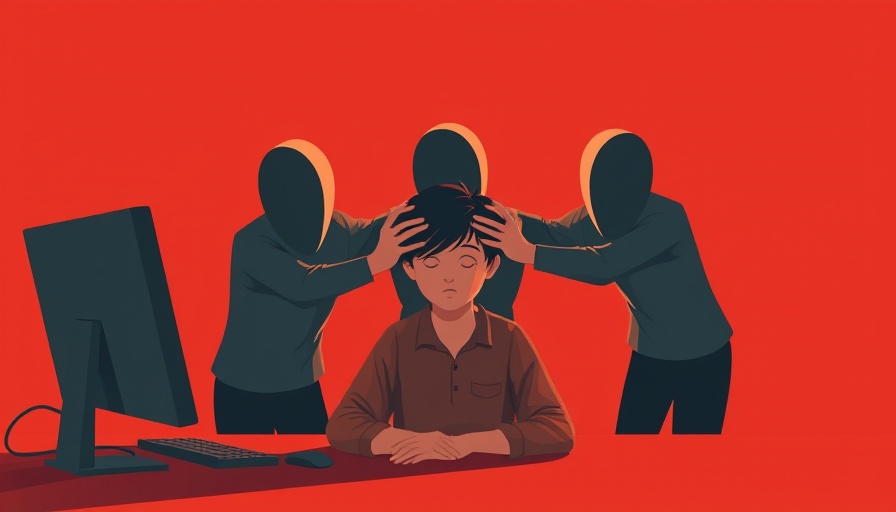
Understanding the Silent Danger of Cyberbullying: How Parents Can Protect Their Kids
The digital landscape presents an array of dangers, but one of the most silent yet impactful threats facing families today is cyberbullying. For parents, especially those in military families, the need to be proactive in protecting their children from these lurking online threats is crucial. With frequent relocations and deployments common among military families, children may find themselves more susceptible to the emotional and psychological impacts of cyberbullying.
Why Military Children Are at Greater Risk
Military-connected youth face unique challenges that can increase their risk for bullying. According to the U.S. Department of Defense, as of 2023, there are approximately 1.5 million children and youth with parents in active duty or the reserves. The stressors associated with military life—such as frequent moves, parental deployment, and adjustments to new environments—can all contribute to feelings of isolation and anxiety, which can make them prime targets for cyberbullying.
Dr. Carmen Leggett, a Family Advocacy Program Specialist, emphasizes that the stress of relocating and leaving friends can wreak havoc on a child’s emotional well-being. The complex dynamics of military life can exacerbate these feelings, not only for the child but for the entire family unit, making it vital for parents to be vigilant and proactive in communication.
Understanding the Forms of Cyberbullying
Cyberbullying can manifest in various ways, not limited to just mean messages. Special Agent Jada Masawi describes it as a form of harassment that can include:
- Online harassment: Sending threatening messages or posting harmful content.
- Impersonation: Creating fake accounts to deceive or manipulate victims.
- Surveillance: Tracking a child’s online activities, which can lead to real-life implications.
- Threats of harm: Direct or indirect threats aiming to intimidate the victim.
Shockingly, around 81% of youth perceive cyberbullying as trivial, believing that digital anonymity may shield them from consequences. They often fail to recognize the severe implications their words and actions can have on their peers.
Recognizing Signs of Cyberbullying
Recognizing signs of cyberbullying is essential for parents in protecting their children. Changes in mood or behavior can often signal distress caused by online interactions. Parents must remain observant and initiate conversations about their child's online experiences. Simple dialogues could encourage children to open up about their feelings and experiences.
Common indicators of a child experiencing cyberbullying may include: changes in sleep patterns, withdrawal from friends and family, reluctance to use electronic devices, or sudden drops in academic performance. Keeping the lines of communication open is critical for understanding and addressing these issues before they escalate.
Steps for Parents to Take
If parents suspect their child is being cyberbullied, they should follow several key steps:
- Notice: Be aware of changes in your child’s behavior or digital habits.
- Talk: Ask open-ended questions to encourage your child to share their experiences.
- Document: Keep a record of incidents, including screenshots of harmful messages.
- Report: Follow the reporting procedures on social media platforms and inform the school and, if necessary, local law enforcement.
- Support: Utilize resources such as the Family Advocacy Program to provide guidance and counseling.
Creating a Supportive Environment
It is imperative to foster a supportive environment both at home and within the community. Engaging in open discussions about the realities of cyberbullying can significantly empower children, helping them navigate the complexities of the digital world confidently. As Leanne Lemons from the Family Advocacy Program suggests, creating a safe space for dialogue is crucial in understanding your child’s unique challenges.
Schools also play a pivotal role. A military-friendly school environment can provide additional support by implementing programs that encourage a positive atmosphere. These programs may include peer mentorship and workshops on digital citizenship that instill values of respect and empathy among students.
Building Resilience Against Cyberbullying
Educating oneself about cyberbullying laws and resources available to families is essential. Teaching children healthy online behaviors reinforces the idea that they are not alone, and they can seek help when needed. Resources such as Military OneSource and CDC guidelines provide comprehensive tools that address youth violence and promote safe digital interactions.
Conclusion: Empowering Our Children for the Digital Age
Understanding and addressing the silent danger of cyberbullying requires active engagement from parents, educators, and the community. By equipping children with the necessary support and knowledge, we can significantly diminish the impacts of cyberbullying, fostering a future where every child can explore the digital landscape safely. Remember, it is essential to take cyberbullying seriously—a child’s well-being is paramount. Together, we can break the cycle of bullying and build healthier communities.
 Add Row
Add Row  Add
Add 




Write A Comment